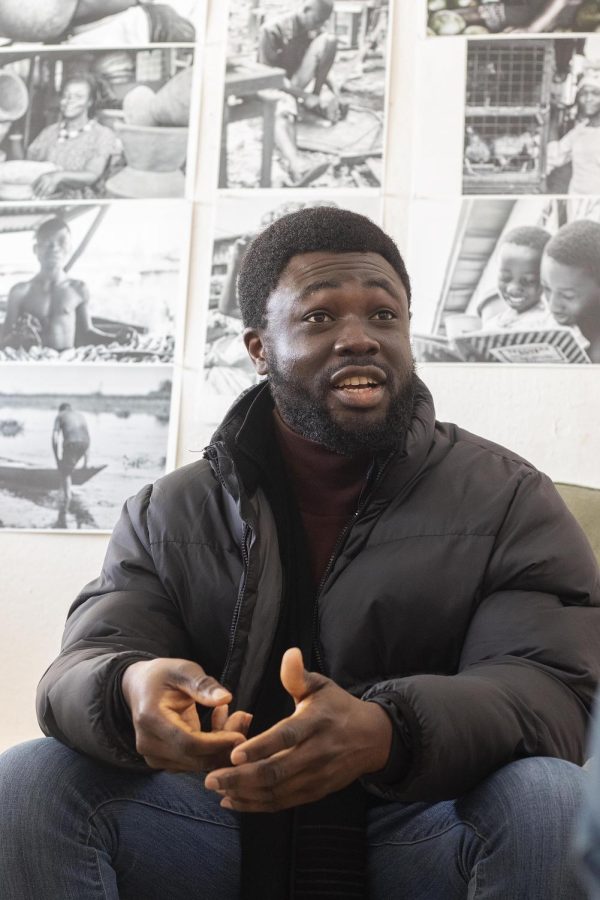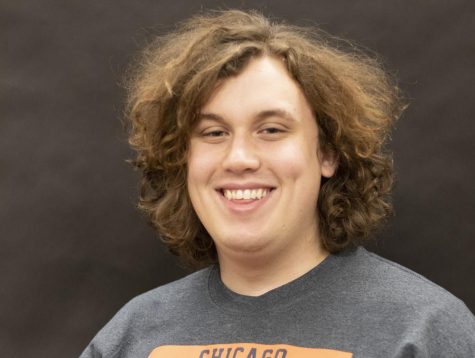Black artists ‘make magic’
February 2, 2022
In light of Black History Month, five Eastern students studying the arts spoke on what it means to them to be Black artists and how being Black influences their art.
Eli Jones
Eli Jones, a junior majoring in 2D studio art, said that being Black helps him approach his work in a way that avoids stereotypes when depicting humans.
“I think (being Black) definitely does influence how I approach my work as far as doing a human being or a particular animal,” Jones said. “But as far as humans, I don’t want to enforce any offensive stereotypes, like I want to be true in how I approach my drawing and my painting because as an artist, I do a lot of things based on gut feeling.”
Jones also disputed claims that art lacks prominence in the Black community.
“Some people say that art isn’t really as prominent in the Black community, but I think that’s misleading because there are a lot of artists who are Black and become very inspired to become artists themselves in their communities,” said Jones.
Kendra Moore
Two of Kendra Moore’s, a senior art education major, paintings were of Black women, and she said she focused on them because of a lack of representation.
“Black women are very unrepresented in this world, and I feel like they should be given a better chance,” Moore said. “I guess it’s hard for us to make it, and we have to try harder than everyone else, and I just wanted to show that in my artwork.”
Moore also said that being a Black student in the art department provided her with an opportunity to display her capabilities as an artist.
“It means a lot because I came into this art program and the people around me are not minorities, they’re mostly white, Caucasian,” Moore said. “So I did feel a little out-of-place, but I think it means a lot to me because I get to show people I am as capable as them, and I get to be a part of representing the minority people.”
Joy Okokon
Struggles for Black artists can occur abroad, too, says Joy Okokon, a Nigerian graduate student studying ceramics. Some artists have to leave their country to find appreciation for their work.
“…And that was very challenging for most artists so they leave their home country and go to some other place that really do appreciate the arts,” Okokon said. “They find joy in it, and you just keep moving from there. That’s kind of the struggle for most African artists back home.”
According to Okokon, family expectations can also be part of the struggle for African artists, as parents often “want their children to study something that they will get good income from, not something they enjoy.”
She told a story of a cousin who had a love of music and a doctor as a father, and the father paid for him to get a doctoral degree. The cousin decided to study music anyway and got his degree in music, and upon his father’s realization that he didn’t study what was expected of him, Okokon said his father was torn between what he believed to be right and supporting his son doing what he loved.
Okokon said she feels privileged that her family supported her pursuits even through struggles with traditional school subjects.
“I am privileged that they are so supportive,” Okokon said. “Even though I had issues with my teachers back in school, they’re like, ‘Why don’t you understand certain things?’ But you can’t mess around with my studio because that is where my joy is, that’s where my happiness is, and I’m not doing well in math or English or any other sort of studies…So I kept pushing on my art, and they kept supporting me, kept buying me stuff.”
Francis Akosah
Francis Akosah, a graduate student from Ghana studying studio art and sculpture, said he developed his passion for art when his mother saw him drawing cartoons on the walls and in sketchbooks and encouraged him to follow his talent. Although he didn’t like it at first, he trusted her knowledge and fell in love with it his first day in class.
“Since then, everything I touch in art, I do it with passion,” Akosah said.
Akosah is currently working on an 8-foot tall elephant composed of various materials like wood and scrap metal.
Samuel Aye-Gboyin
Samuel Aye-Gboyin, a graduate student studying graphic design, says his work, which includes photography and animation, investigates the ideas of power, poverty and the unequal distribution of wealth.
“So, as an artist, you need to be an advocate; you need to do work that tells the message,” Aye-Gboyin said. “So my work is essentially about that…so being a Black artist is phenomenal because I get to tell the African story the African way and get ahead, so eventually change happens.”
When it comes to representation of Black art, Aye-Gboyin said “we should all be viewed as humans first,” but acknowledges that if not for the hard work of other Black artists he wouldn’t be where he is now.
“We’re all humans, and we bleed red,” Aye-Gboyin said. “So I don’t think we should see any other way…I don’t see the difference between Black art or white art. We are just humans making art in the art community, essentially.”
Ryan Meyer can be contacted at 581-2812 or at [email protected].




















































